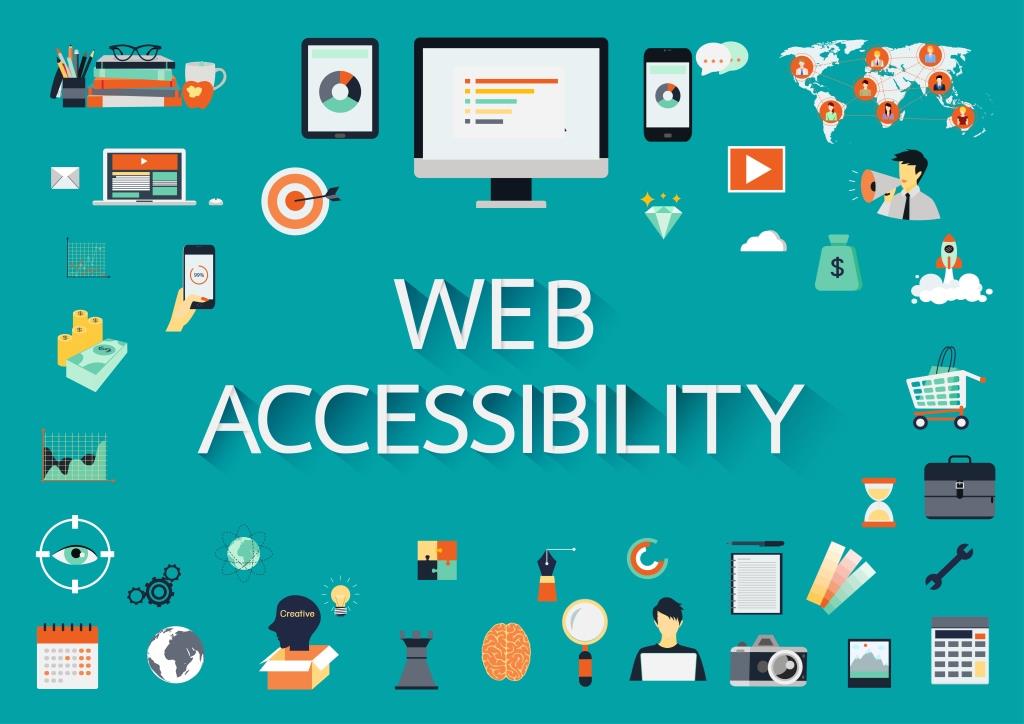Accessibility is the final frontier of web design for many businesses. No matter the sector you operate in, your website is your shop window to the world, connecting you to millions of potential customers globally and acting as the main portal for customers, suppliers and everyone else who wants to do business with you. Accordingly, there is a huge amount of time, budget and other resources funneled into raising the visibility of your site, promoting it and aiming to attract as much traffic as possible. The trouble is, most businesses are missing out on a huge percentage of traffic just from the fact that they aren’t as accessible as they could be. The good news is that accessibility doesn’t have to be difficult or expensive to implement – and once you’ve made some changes, you will have the mindset needed to plan any further development with accessibility at the heart of it. Millions of users globally rely on websites being as accessible as possible, and if you aren’t taking the time to understand their needs, then everyone will be missing out. There are several underlying issues that can make a site impossible to use for people with certain disabilities – and not just that, but accessibility improvements are also improvements for all users which can affect positive change across the board. Once your site is welcoming to all visitors, you really will be flying.

Shutterstock Licensed Photo – By Bimbim
What Is Web Based Accessibility?
In an ideal world, everyone would be able to access any website on the internet – regardless of what conditions they may live with and what support from hardware or software they require. And yet the fact is that millions of internet users with disabilities and impairments find it difficult – sometimes even impossible – to access many types of websites in use, even from some of the biggest organizations going. When we design with the challenges of accessibility in mind, what we get is not just a website that’s easier to use for a minority, but an improved experience for all web users. In addition to that, many of the basic tenets of accessible design also boosts your sites optimization for search, as Google rewards well-thought out informational structures which also work well with screen reading software and other accessible assistive technologies, such as speech recognition software, alternative keyboard and Braille terminals. Many countries now have laws around the accessibility of websites (any many more will be introducing them imminently), so working on this matter future proofs your site, keeps everything legal, wins you a new user base, keeps you one step ahead of your competitors and improves your search rankings. All extremely compelling reasons to get started, let alone the humanistic perspective.
Accessibility In Design
Making sure your site is accessible means being keyboard friendly- it must be navigable without using a mouse. And that’s because many assistive technologies rely on keyboards to process pages, links, content and everything else. So, make sure all the links, buttons and forms you include on your site have keyboard focus and can be navigated using the tab function. If you use dynamic content for your site – that’s the stuff that changes without the page having reloaded – then this can be confusing for screen readers that will miss the new content. Using ARIA landmarks can help to get past this, enabling you to tag dynamic content as a ‘live region’ which flags up changes with screen readers. Another very basic and easily made change is to ensure that all images contain ALT text, which is what screen readers use to describe the images on a page. When it comes to design choices, try to ensure that you use a high contrast between text and background colors in order to make your pages easier to read – ContrastChecker can give your site a score in real time. Using headers to structure content correct is another easy fix to make – with a few small steps you can definitely make your site much more accessible and reap the benefits.
Accessibility In Content
Although often spoken about primarily from a design perspective, accessibility standards should also be at the heart of all the content you create. This can be as simple as paying attention to using plain English terms rather than jargon to aid comprehension, giving all your links unique descriptive names and using anchor text to structure content as well as avoiding the use of images for headers and titles. You should also aim to make your site fully available in as many different languages as you can, or you could be cutting yourself off to a huge amount of business. And lazily adding a translation widget to your site isn’t the answer – a proper agency handling transcription jobs who are aware of language nuances and translating for meaning is required to do it justice.
